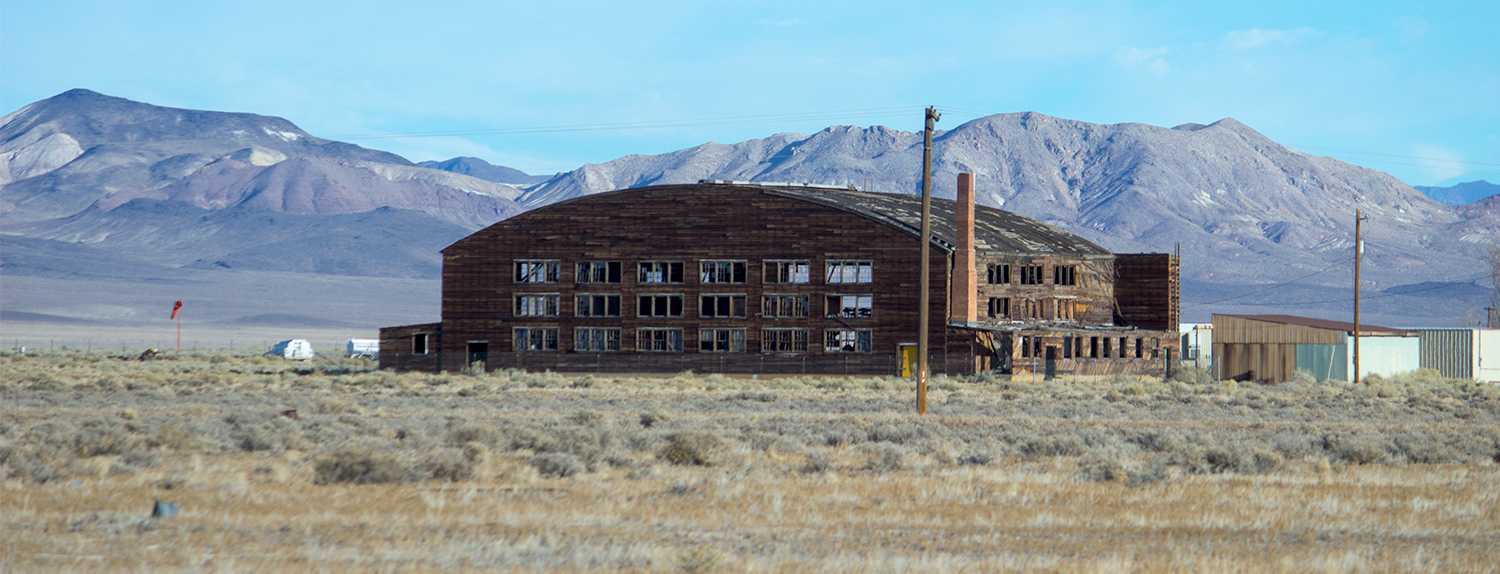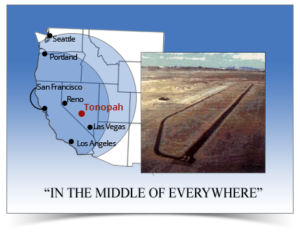FAA Identifier:
TPH
Lat/Long:
N38°3.59′ / W117°5.20′
Elevation:
Surveyed Elevation is 5430 feet MSL
SkyVector Aeronautical Charts

Tonopah is at the strategic crossroads of major air/truck corridors with intersecting north-south truck transportation and east-west air transportation.
Tonopah is on US95, the major north-south highway connecting Reno/I-80 and Las Vegas/I-15, both three to four hours away by ground transportation. US 6 runs east to west at the airport.

1 Airport Rd, Tonopah NV
Ph: 775-482-3626
TPH
N38°3.59′ / W117°5.20′
Surveyed Elevation is 5430 feet MSL
Efforts to obtain a large tract of land in that area for bombing and gunnery practice began. On October 29, 1940, more than 3,000,000 acres of the public domain (approximately 5,000 square miles) South East of the proposed airfield were transferred from the Department of Interior to the War Department.
It consisted of mess halls, barracks, a hospital and other facilities. Bell P-39 Airacobras, a fighter with the 12 cylinder engine behind the pilot were the first to arrive. During 1943, twelve P-39 fighter squadrons trained on the bombing and gunnery range, flying out of the Tonopah base.
By late 1943 a three million dollar expansion project began. It transformed the base into a B-24 Liberator bomber training facility and became known as the Tonopah Army Air Field. The B-24 was a four engine, twin tailed aircraft which carried a crew of up to 10. During Oct. 1944 there were 66 B-24 aircraft available for the training program. After training at Tonopah the bomber crews would be assigned to bases in Europe and the Pacific.
Between 1942 and 1945 six thousand military personnel had been stationed at T.A.A.F. including 1,264 officers and, 5,273 enlisted men and women. Between Feb. 1944 and August 1945 seven hundred fifty combat crews trained at the base.
Their mission was to test secret guided bombs at and near the base. Those tests were the foundation of 21st century Smart Bombs.
During August 1945 TAAF was put on inactive status, By 1947 the base was declared excess. Today what remains of what was one of the nations largest W.W.II pilot and bomber training bases are two hangers in various stages of disrepair, acres of concrete foundations, the runways and Tonopahs Airport.
TOWN OF TONOPAH
140 S Main Street, Tonopah, NV 89049
(775) 482-6336
Staff Directory
MAILING ADDRESS:
P.O. Box 151, Tonopah, NV 89049
By Robin Hebrock Pahrump Valley Times March 13, 2024 – 6:48 am Preserving history for generations to come while simultaneously boosting tourism – that’s the goal of Tonopah Main Street: […]
We use cookies to help us improve, promote, and protect our services. By continuing to use the site, you agree to our cookie policy. Privacy Policy
Ok, got itWe may request cookies to be set on your device. We use cookies to let us know when you visit our websites, how you interact with us, to enrich your user experience, and to customize your relationship with our website.
Click on the different category headings to find out more. You can also change some of your preferences. Note that blocking some types of cookies may impact your experience on our websites and the services we are able to offer.
These cookies are strictly necessary to provide you with services available through our website and to use some of its features.
Because these cookies are strictly necessary to deliver the website, you cannot refuse them without impacting how our site functions. You can block or delete them by changing your browser settings and force blocking all cookies on this website.
These cookies collect information that is used either in aggregate form to help us understand how our website is being used or how effective our marketing campaigns are, or to help us customize our website and application for you in order to enhance your experience.
If you do not want that we track your visist to our site you can disable tracking in your browser here:
We also use different external services like Google Webfonts, Google Maps and external Video providers. Since these providers may collect personal data like your IP address we allow you to block them here. Please be aware that this might heavily reduce the functionality and appearance of our site. Changes will take effect once you reload the page.
Google Webfont Settings:
Google Map Settings:
Vimeo and Youtube video embeds:
You can read about our cookies and privacy settings in detail on our Privacy Policy Page.
Privacy Policy